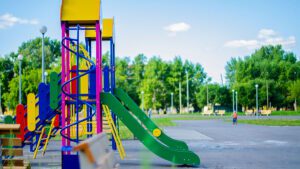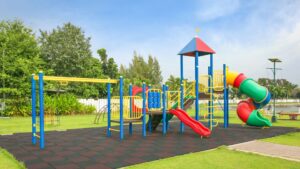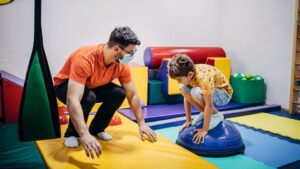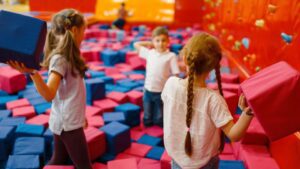Los centros de juegos blandos se han convertido en un elemento básico del ocio familiar, ya que combinan diversión, aprendizaje y ejercicio en un entorno seguro y acolchado. Ideales para niños pequeños, preescolares e incluso mayores, estas instalaciones cubiertas permiten a los niños explorar, trepar y socializar sin el riesgo que suponen las superficies duras. En esta completa guía, explicaremos qué es un centro de juegos blandos, destacaremos sus principales atracciones, hablaremos de dónde suelen encontrarse y ofreceremos consejos para planificar o gestionar su propia instalación.

1. 1. Definición y finalidad
A centro de juegos blandos es una instalación de juegos de interior construida íntegramente con elementos recubiertos de espuma, caucho y vinilo. A diferencia de los parques infantiles tradicionales con barras metálicas y suelos de hormigón, todas las superficies de un centro de juegos blandos están acolchadas para minimizar el riesgo de lesiones por resbalones, tropiezos y caídas.
Objetivos principales:
- Seguridad: Las estructuras acolchadas absorben los impactos, reduciendo golpes y magulladuras.
- Desarrollo motor: Las estructuras para trepar, los toboganes y los túneles desarrollan la motricidad gruesa.
- Habilidades sociales: Las estaciones de juego en grupo fomentan el intercambio, la cooperación y la comunicación.
- Crecimiento cognitivo: Los paneles interactivos y las carreras de obstáculos fomentan la resolución de problemas y la creatividad.

2. Componentes básicos de un centro de juegos blandos
La mayoría de los centros de juegos blandos comparten un conjunto básico de atracciones diseñadas para atraer a niños de diferentes edades y capacidades. A continuación se indican las estructuras esenciales que probablemente encontrará:
2.1 Bastidores y plataformas de escalada
- Torres de escalada blandas: Plataformas de varios niveles conectadas por rampas acolchadas y puentes de cuerda.
- Redes de carga y escaleras: Fomentar la fuerza y la coordinación de la parte superior del cuerpo.
- Puestos de vigilancia: Permita el juego imaginativo del "fuerte" con vistas panorámicas.
2.2 Diapositivas
- Diapositivas de tubo: Toboganes cerrados y sinuosos que añaden emoción a la vez que mantienen a los niños contenidos.
- Wave Slides: Toboganes cortos y ondulados perfectos para niños pequeños.
- Toboganes locos: Múltiples carriles para competir con amigos codo con codo.
2.3 Piscinas de bolas y zonas de espuma
- Piscina de bolas clásica: Miles de bolas de plástico blando crean una zona de juego rica en sentidos.
- Bloques de espuma y formas: Los niños apilan, gatean y derriban grandes piezas de espuma.
2.4 Zonas para niños pequeños
- Minisets adecuados a la edad: Toboganes bajos, túneles blandos para gatear y obstáculos seguros para los bebés.
- Paneles sensoriales: Actividades táctiles, sonoras y visuales adaptadas a los más pequeños.
2.5 Paneles interactivos y muros de aprendizaje
- Tableros alfabéticos y numéricos: Fomentar la lectoescritura y la aritmética elemental a través del juego.
- Paneles musicales: Los tambores, las campanillas y los juegos sonoros fomentan las habilidades auditivas.
2.6 Carreras de obstáculos y laberintos
- Circuitos de agilidad: Las barras de equilibrio, los peldaños y las pequeñas vallas desarrollan la coordinación.
- Laberintos blandos: Pasillos revestidos de espuma que desafían la navegación espacial.
2.7 Trampolines de aire y zonas de rebote
- Saltador hinchable: Superficies de rebote de bajo impacto que fortalecen las piernas.
- Zonas cargadas por muelles: Minitrampolines con cercos de seguridad.
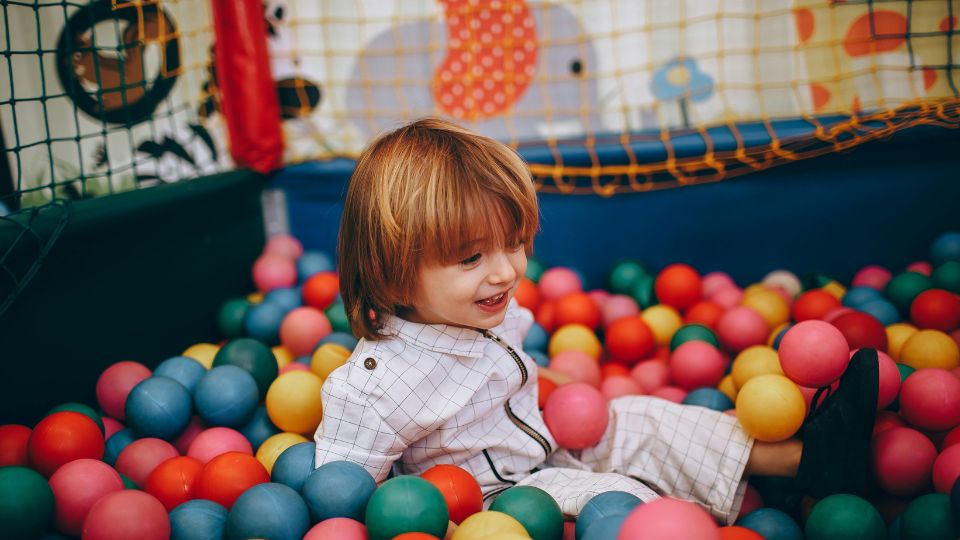
3. Beneficios de los juegos blandos para los niños
Los centros de juegos blandos ofrecen una experiencia de desarrollo polifacética:
- Salud física: Desarrolla la fuerza, el equilibrio y la condición física cardiovascular sin caídas fuertes.
- Bienestar emocional: Un entorno seguro reduce el estrés de los padres y da confianza a los niños.
- Interacción social: Los puestos de juego compartidos y los juegos en grupo fomentan la amistad y el trabajo en equipo.
- Habilidades cognitivas: Resolución de problemas al navegar por cursos o reproducir paneles educativos.
- Integración sensorial: La variedad de texturas, formas y sonidos favorece el desarrollo del procesamiento sensorial.
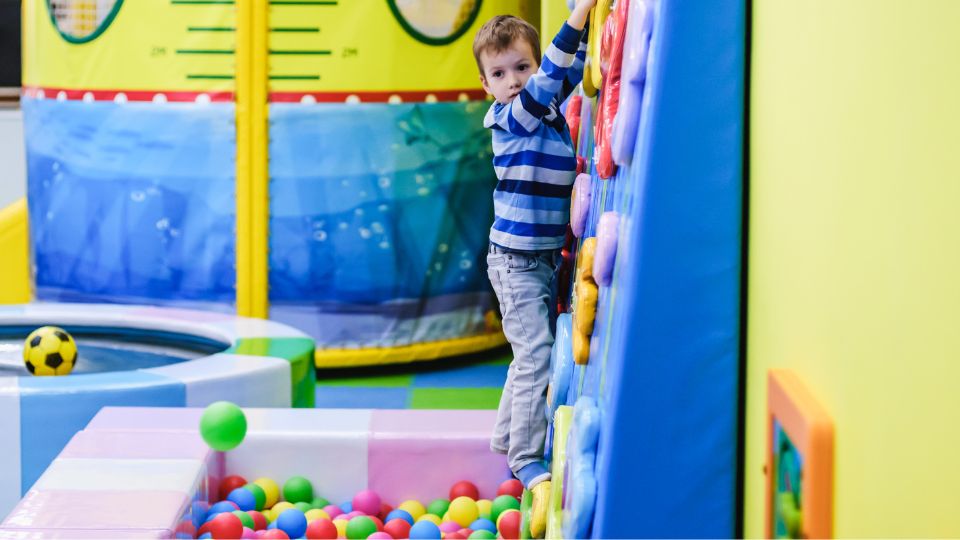
4. Ubicaciones ideales para los centros de juegos blandos
Las instalaciones de juegos blandos pueden ser negocios independientes o integrarse en recintos más grandes:
- Centros comerciales: Entretiene a los niños mientras los padres compran.
- Restaurantes y cafeterías: Los restaurantes familiares suelen incluir una pequeña sección de juegos para niños.
- Guarderías y centros preescolares: Ofrece un entorno interior seguro para las horas de juego programadas.
- Centros comunitarios y recreativos: Ofrece actividades para todas las estaciones a las familias locales.
- Iglesias e instalaciones religiosas: Las zonas destinadas a los niños ofrecen juegos seguros para ellos.
- Complejos de apartamentos y comunidades de viviendas: Salas de juego interiores compartidas para los residentes.
- Centros médicos y hospitales: Las zonas de juegos terapéuticos distraen a los pacientes más jóvenes.
- Gimnasios y gimnasios: Las zonas infantiles permiten a los padres hacer ejercicio sin preocupaciones.

5. Licencias, seguridad y conformidad
Dirigir un centro de juegos blandos seguro y reputado exige cumplir la normativa:
- Licencias comerciales locales: Asegúrese de que sus instalaciones cumplen los códigos de zonificación y ocupación.
- Normas de seguridad: Certificación ISO o ASTM de atenuación de impactos y seguridad de los materiales.
- Inspecciones periódicas: Los controles diarios del personal y las auditorías anuales de terceros mantienen los equipos en buen estado.
- Protocolos de saneamiento: Las superficies de vinilo no porosas y la desinfección rutinaria evitan la propagación de enfermedades.
- Formación del personal: Empleados formados en RCP, primeros auxilios y buenas prácticas de supervisión infantil.

6. Planificación y diseño de su centro de juegos blandos
6.1 Evaluación del espacio
- Necesidades de metros cuadrados: Estime 30-35 pies cuadrados por niño para evitar el hacinamiento.
- Altura del techo: Mínimo de 14 pies para estructuras de varios niveles y toboganes tubulares.
- Requisitos del suelo: Losa de hormigón nivelada con plataforma y capa de superficie de seguridad.
6.2 Diseño temático
- Identidad de marca: Los colores, logotipos y temas refuerzan su marca (selva, océano, espacio).
- Zonificación: Zonas separadas para niños pequeños, preescolares y escolares con señalización clara.
- Líneas de visión: Los diseños abiertos permiten a los cuidadores observar fácilmente toda la actividad.
6.3 Consideraciones presupuestarias
- Costes de equipamiento: Los kits de juegos blandos de alta calidad rondan los $50-$150 por metro cuadrado.
- Gastos de instalación: El montaje y anclaje profesionales añaden 10-15% a los costes de equipamiento.
- Gastos operativos: Hay que tener en cuenta el personal, los servicios, el mantenimiento y los seguros.

7. Explotación y comercialización de su centro de juegos infantiles
7.1 Modelos de fijación de precios
- Cuotas sin cita previa: $8-$15 por niño para una hora de acceso.
- Paquetes de afiliación: Pases mensuales o programas de fidelidad para visitantes frecuentes.
- Paquetes de cumpleaños: Alquiler de salas privadas, anfitrión de fiestas y complementos de catering.
7.2 Programación
- Eventos temáticos: El día del pijama, las aventuras de superhéroes o los talleres STEM atraen visitas repetidas.
- Tiempo para padres y niños pequeños: Horas tranquilas programadas para la socialización de los primeros años.
- Asociaciones entre escuelas y campamentos: Las reservas para viajes de estudios aumentan la ocupación diurna.
7.3 Estrategias de marketing
- Redes sociales: Anuncios en Instagram y Facebook que muestran vibrantes zonas de juego.
- Asociaciones locales: Colabore con centros preescolares, pediatras y blogueros familiares.
- Actividades de extensión comunitaria: Organice jornadas de demostración gratuitas en bibliotecas o ferias comunitarias.

8. Gestión del mantenimiento y la seguridad
- Limpieza diaria: Inspeccione alfombras, piscinas de bolas y estructuras de escalada en busca de daños o residuos.
- Auditorías mensuales: Compruebe los pernos de anclaje, sustituya la espuma desgastada y repare los desgarros del vinilo.
- Seguimiento de incidentes: Registre cualquier lesión o fallo del equipo para ajustar los protocolos de seguridad.
- Comentarios de los clientes: Anime a los padres a valorar la limpieza, la amabilidad del personal y la experiencia en general.
9. Tendencias futuras en los juegos infantiles
- Realidad Aumentada (RA): Las proyecciones interactivas en suelos y paredes añaden capas digitales.
- Materiales ecológicos: La espuma reciclada y el vinilo biodegradable reducen el impacto medioambiental.
- Escape Rooms sensoriales: Cabinas silenciosas con iluminación regulable y sonidos relajantes.
- Zonas de juego adaptables: Equipamiento inclusivo para niños de todas las capacidades y niveles de desarrollo.
Conclusión
A centro de juegos blandos ofrece una combinación única de seguridad, enriquecimiento del desarrollo y pura diversión. Si conoce los componentes básicos -desde estructuras para trepar y piscinas de bolas hasta paneles sensoriales y zonas para niños pequeños- podrá crear o elegir una instalación que haga las delicias de las familias y destaque en un mercado competitivo. Con una planificación cuidadosa, normas de seguridad rigurosas y una programación atractiva, su centro de juegos blandos de interior se convertirá en un centro comunitario muy querido donde los niños juegan, aprenden y crecen durante todo el año.
Tanto si es un empresario en ciernes como si es el gerente de un centro, utilice esta guía como hoja de ruta para diseñar, gestionar y comercializar un próspero entorno de juegos blandos. Invertir en equipos de calidad, mantener estrictos protocolos de seguridad y ofrecer experiencias excepcionales a los clientes garantizará que su centro siga siendo rentable e inolvidable desde el punto de vista lúdico.

